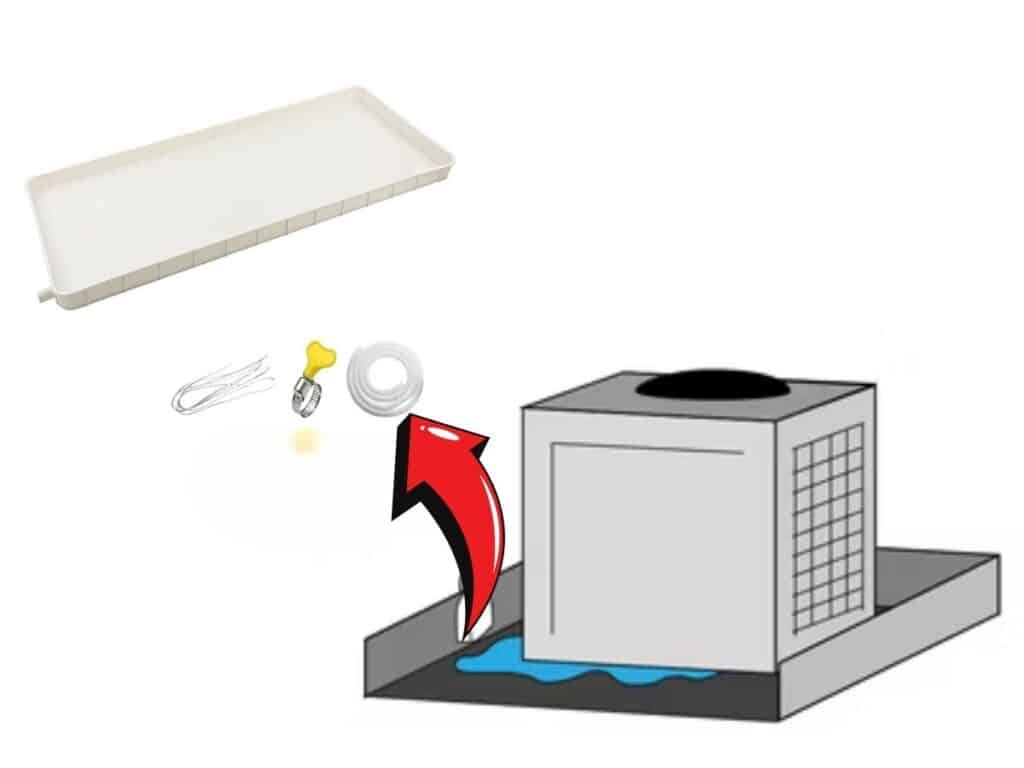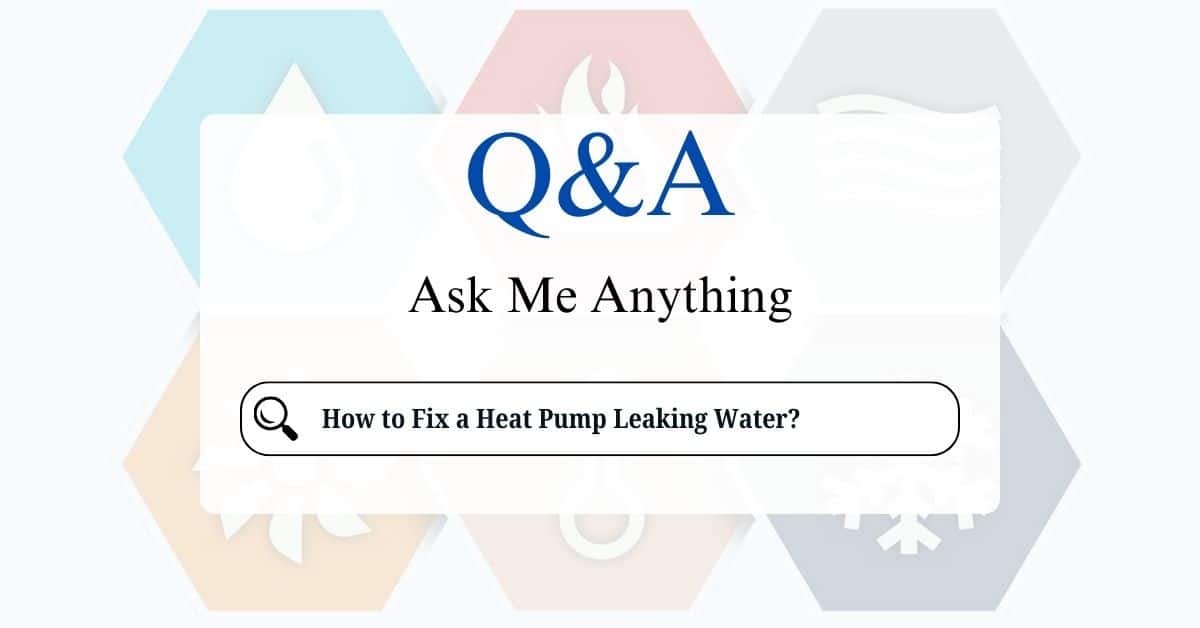A heat pump is a fantastic year-round comfort solution, but finding water leaking from it can be concerning. While some condensation is normal, a persistent leak signals a problem. This friendly guide will help you understand common causes of heat pump water leaks and offer troubleshooting steps you can take (and when it’s time to call a pro).
Why is My Heat Pump Leaking? Common Culprits
Heat pumps can leak water from either the indoor or outdoor unit, and the causes differ:
Indoor Unit Leaks
- Clogged Condensate Drain Line: This is the most common cause of indoor leaks. During cooling, the heat pump removes moisture from the air, which condenses into water. This water drains through a pipe called the condensate drain line. If this line gets clogged with dust, algae, or debris, water can back up and overflow.
- Dirty Air Filter: A very dirty air filter restricts airflow across the evaporator coil (the part that gets cold during cooling), causing it to get excessively cold and freeze. When the ice melts, it can overwhelm the condensate drain.
- Frozen Evaporator Coil: In some cases, the evaporator coil can freeze due to other issues like low refrigerant or a malfunctioning blower motor. When the ice melts, it creates a significant amount of water.
- Damaged Drain Pan: The drain pan collects the condensate water before it flows into the drain line. If the pan is cracked or damaged, it can leak.
- Improper Installation: If the indoor unit wasn’t installed correctly, the drain line might not be properly sloped, preventing proper drainage.
Outdoor Unit Leaks
- Defrost Cycle (Normal): During the heating season, the outdoor unit can accumulate frost. The defrost cycle melts this frost, and it’s normal to see water dripping or flowing from the unit during this process. This is not a leak.
- Ice Buildup (Excessive): If there’s excessive ice buildup on the outdoor unit that doesn’t melt properly during the defrost cycle, the melting ice can lead to more water than usual. This can be due to poor airflow, refrigerant issues, or a malfunctioning defrost system.
Troubleshooting Steps (Indoor Unit Leaks)
If you see water leaking from your indoor heat pump unit, here are some things you can check:
- Check the Air Filter: Replace a dirty air filter with a clean one. This is the easiest fix and often resolves the problem.
- Check the Condensate Drain Line:
- Locate the Drain Line: Find the PVC pipe that drains water away from the indoor unit. It usually exits the unit near the bottom and goes to a drain or outside.
- Check for Blockages: Look for any visible blockages or kinks in the line.
- Clear the Drain Line: You can try using a wet/dry vacuum to suck out any clogs. You can also try using a stiff wire or a specialized drain line cleaning tool (available at hardware stores) to clear the blockage. Be gentle to avoid damaging the pipe.
- Check for Ice on the Evaporator Coil: If you can access the evaporator coil (usually behind an access panel), check for ice buildup. If there’s ice, turn off the heat pump at the thermostat and allow the ice to melt naturally. Do not try to chip away the ice.

Troubleshooting Steps (Outdoor Unit “Leaks”)
If you see water around your outdoor heat pump unit, determine if it’s during the defrost cycle:
- Observe During Operation: If water is dripping only during the defrost cycle (which happens periodically in heating mode), this is normal.
- Check for Excessive Ice: If there’s a thick layer of ice that isn’t melting properly, ensure proper airflow around the unit (clear snow, debris, and vegetation). If the problem persists, it’s best to call a technician.
When to Call a Professional
- Persistent Indoor Leaks: If you’ve checked the air filter and drain line and the indoor leak continues, it’s time to call a professional. There may be a more serious issue like a refrigerant leak, a damaged drain pan, or an installation problem.
- Excessive Ice Buildup on the Outdoor Unit: If the outdoor unit is consistently covered in excessive ice, even after clearing obstructions, call a technician. This could indicate a refrigerant problem or a malfunctioning defrost system.
- Refrigerant Leaks: If you suspect a refrigerant leak (reduced heating/cooling, hissing sound), call a professional immediately. Refrigerant handling requires specialized equipment and certification.
- Uncomfortable Working with HVAC Systems: If you’re not comfortable working with HVAC components or electrical wiring, it’s always best to call a professional.
Preventing Future Leaks
- Regular Air Filter Changes: This is the most important preventive measure.
- Annual Professional Maintenance: Schedule annual tune-ups to have your heat pump inspected and cleaned. A technician can check the drain line, refrigerant levels, and other components.
- Ensure Proper Grading Around the Outdoor Unit: Make sure the ground slopes away from the unit to allow for proper drainage.
By understanding these troubleshooting steps and preventive measures, you can address many common heat pump water leak issues. Remember, if you’re ever unsure or uncomfortable, contacting a qualified HVAC professional is always the best choice.






